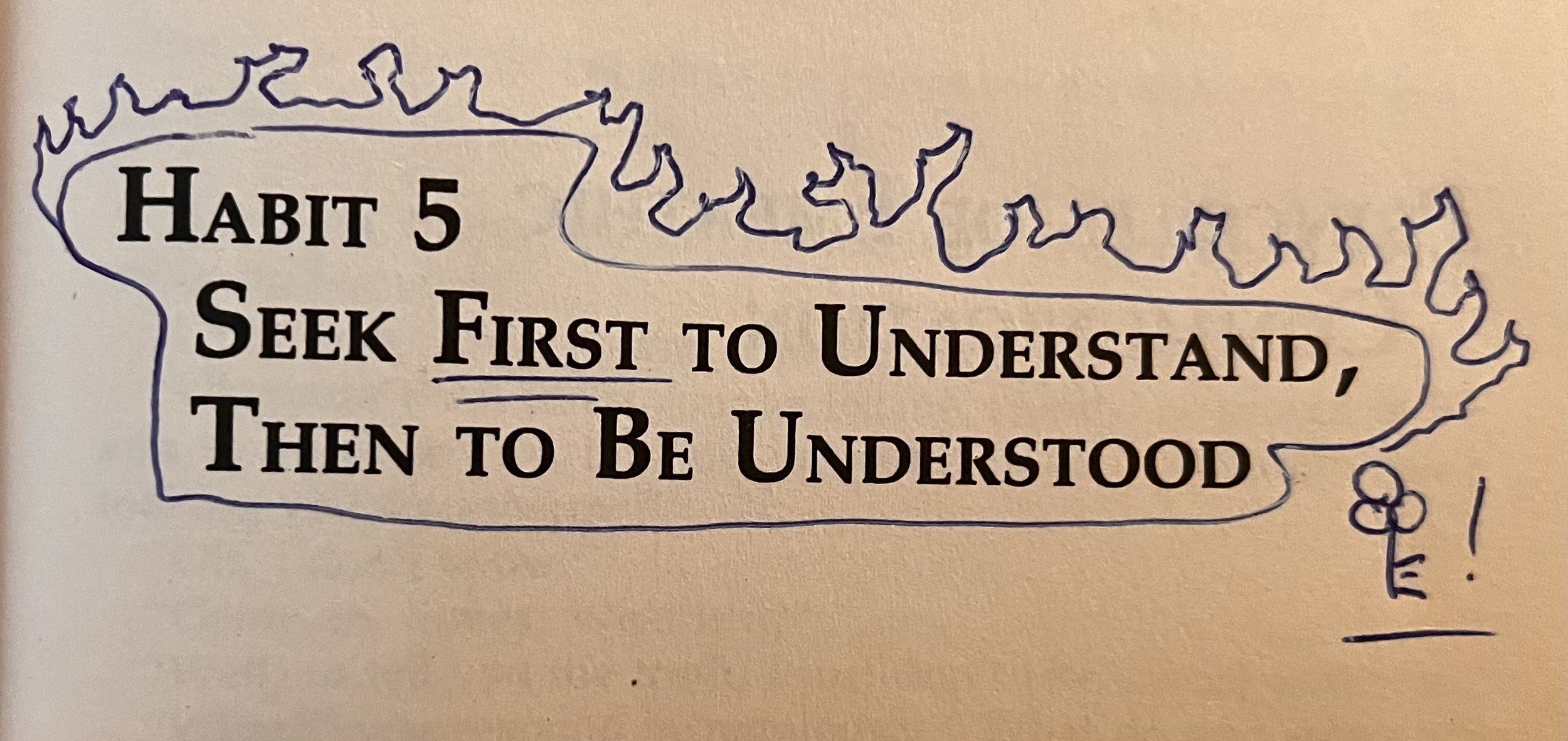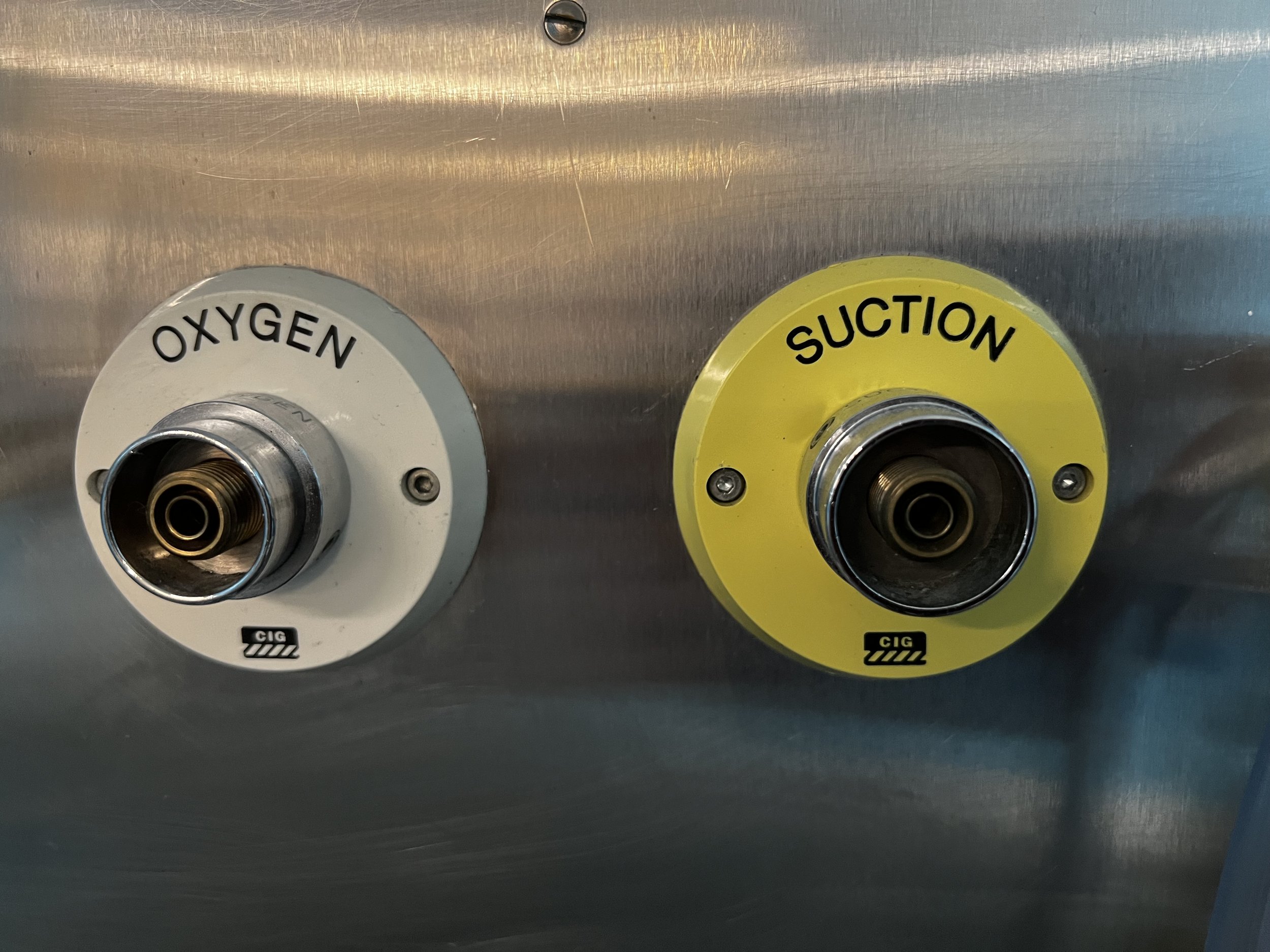Leading through a lens of learning…
‘Seek first to understand’
Photo from James Samana’s personal library
Stephen R. Covey’s ‘The 7 habits of highly effective people: Powerful lessons in personal change”
(1989, pg 235)
If you want to be a Good Leader, regardless of your ‘level’ in the hierarchy, that means that you will need to learn how to lead through a lens of learning.
Think of your own experience in organisations. How many times have you seen a new leader come into an area, and eager to ‘make their mark’, they immediately start to ‘fix’ things. Some of the things they target their attention on aren’t even broken, nor are they in need of ‘fixing’, yet there is little, to no, consultation. Leaders too eager to ‘make their mark’ often can fall prey to the trap of ‘knowing what needs to be done’ before they ever experience the gift of not knowing. It is easy to do. We all do this to some extent. We rush in with solutions - because this is how we’ve achieved what we’ve achieved. We are skilled problem solvers. And in crisis situations, this dictatorial leadership style where the leader solves things, changes things, and organises things can be the right way to do things… but we have a bias for this that seeps into situations that are not crisis. Sometimes even when things are already working well, we take this crisis dictatorial approach. And this, while not defendable, is understandable. We are skilled at organising things, thoughts, ideas. Yet, we are not as comfortable in the space of being a novice. Of not knowing. Of being a learner, rather than an expert, which more often than not, is what is required from us as leaders, if we want to succeed.
Charlton Ogburn Jr., wrote about why he suspected this was the case in organisations when he wrote about his experiences of organising teams in WWII. In his 1957 Harper’s Magazine essay he said:
“We trained hard, but it seemed that every time we were beginning to form up into teams, we would be reorganised. Presumably the plans for our employment were being changed. I was to learn later in life that, perhaps because we are so good at organizing, we tend as a nation to meet any new situation by reorganizing; and a wonderful method it can be for creating the illusion of progress while producing confusion, inefficiency, and demoralisation. During our reorganizations, several commanding officers were tried out on us, which added to the discontinuity.”
1957, C. Ogburn Jr., Merrill’s marauders: The truth about an incredible adventure,
Harper’s Magazine, Vol 214, No 1280, pg 32-33
‘Hazards in complacency’
Photo by James Samana
Unfortunately, we’ve not come all that far from the mindset that Ogburn and his colleagues experienced in 1957. We have acquiesced (i.e. unwillingly ‘accepted’) that this is just how things are. It is the complacent acceptance that this is just how one needs to lead if they are to get ahead.
Yet there is another way. If you, as a leader, want to both stand out and achieve great things, then you can change your leadership identity from ‘one who KNOWS’, to ‘one who LEARNS’. This subtle shift will allow you to both feed your unconscious drive to ‘make a difference’ without feeding the more dangerous drive to ‘be seen to make a difference’.
The trick is in identifying for yourself when this second part, the ‘…to be seen…’ arises, as this is the hazard which needs to be mitigated. It is the compelling pull for leaders to just do, rather than understand what needs to be done. And it feels good to be seen. Yet it takes the trust that if you first seek to understand, then you can start to make contributions that will naturally have you as being understood.
‘Connection is care’
Photo by James Samana
Two Sulpher-crested cockatoos
Cacatua galerita
If you are to first understand, a large part of your efforts should be on building connections with those you lead. If you can help your teams feel that you value their insights, that you care about their struggles, and that you want to help them to be their best… if you can show your team that you see their strengths, and want to better understand how they see their work, THEN you will have access to a greater data set on how you can add your value to the equation.
Connection is the key. Become aware of your own desires to add value, so you can actually hold your contributions until you understand your team. Yet it is often easier said than done. Connection is difficult to do when trust had been lost, or when one is burned out, or in a crisis state… yet that is often when it becomes critical to have the connection and support from your team… who mayn’t even know you are struggling.
‘Your choice…’
Photo by James Samana
In the end, we have a choice of how we want to present our authentic self, within the various leadership contexts that we find our self. And there are a multitude of micro-skills to help you enact that choice… but only after you’ve made it.
Do you want to be the oxygen that fuels the fire of your team? Or do you want to suck the oxygen out of their spark, to fuel your own story - before even understanding theirs?
If you’ve made the choice to walk a path of insight, I’d love to hear from you, and hopefully be a part of your journey towards understanding and fuelling other’s fires.




